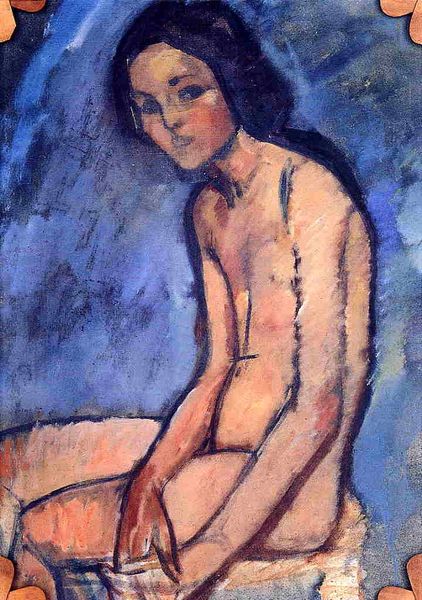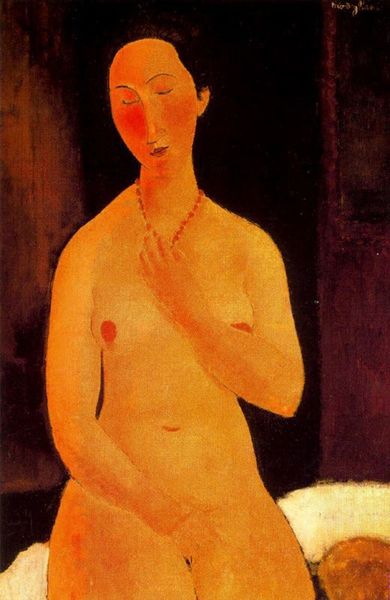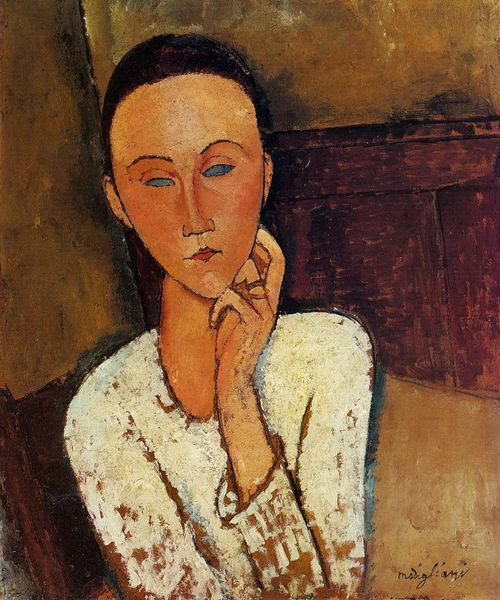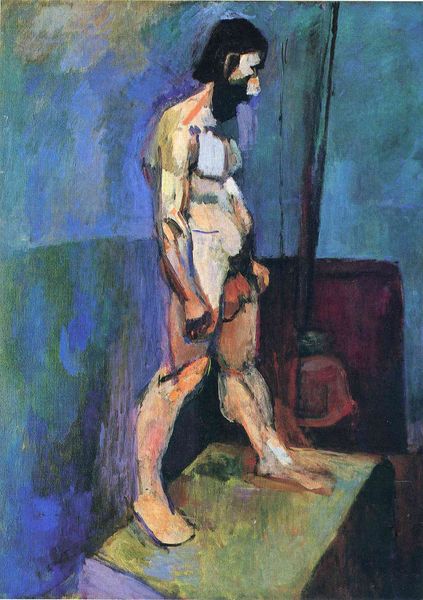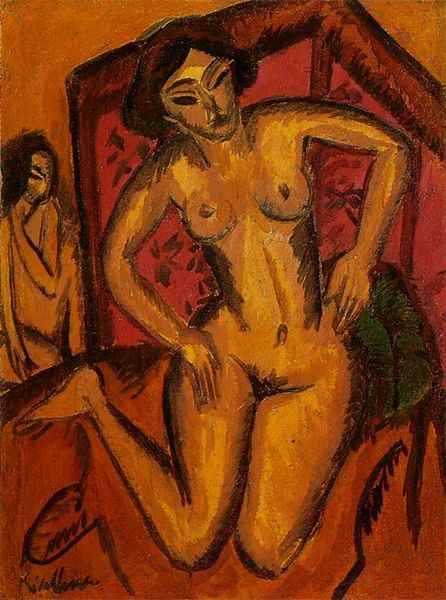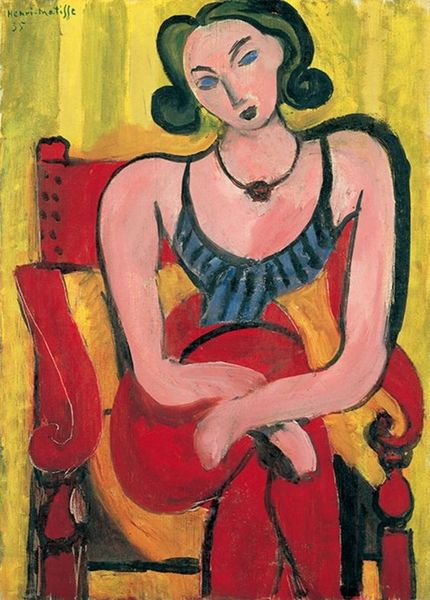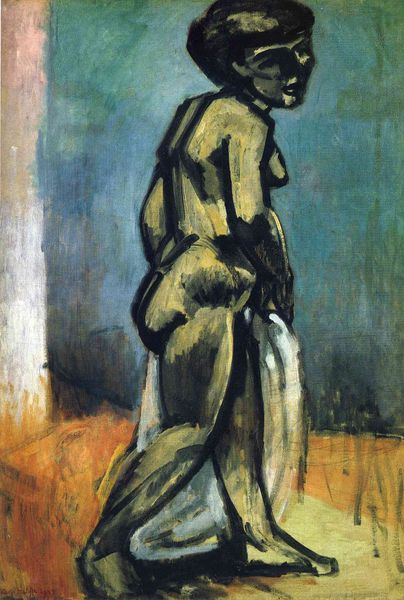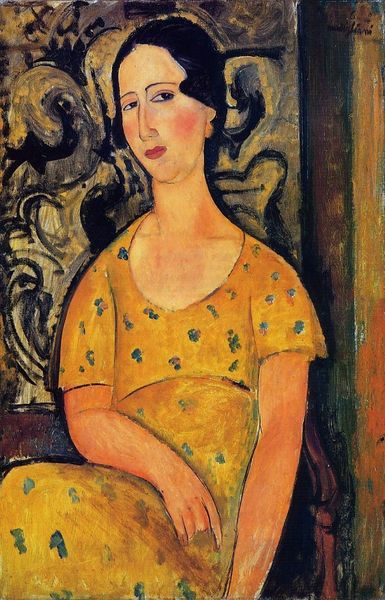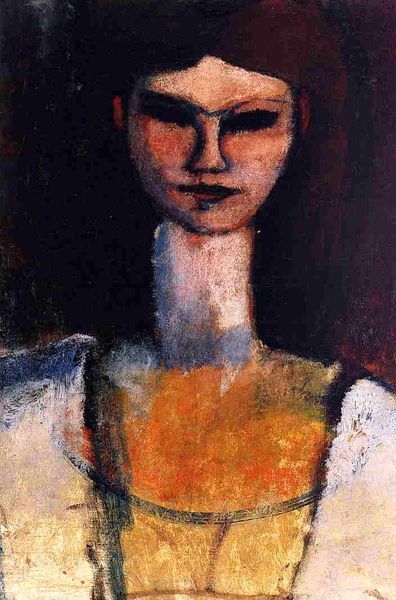
painting, oil-paint, impasto
#
portrait
#
painting
#
oil-paint
#
figuration
#
oil painting
#
impasto
#
female-nude
#
nude
#
early-renaissance
Dimensions: 106 x 76 cm
Copyright: Public domain US
Curator: Looking at Pablo Picasso’s "Seated Female Nude," crafted in 1905 and currently housed in the Centre Pompidou, one is immediately struck by its curious simplicity. Editor: Yes, a sort of spectral presence emerges from the canvas. There’s a quiet melancholia, wouldn’t you agree? The flattened space and limited palette evoke a feeling of introspection. Curator: Absolutely. The composition is a study in contrasts. We see the delicate modeling of the figure offset by the broad, almost crude brushstrokes that define the setting. The strategic use of impasto highlights form and texture. Editor: And I wonder about its place in the burgeoning modernist art world. Considering Picasso's societal context, how was the nude figure perceived in relation to contemporary notions of female representation and viewership? It is clearly divorced from older academic traditions... Curator: It certainly pushes the boundaries. We can see him actively rejecting established artistic norms; for instance the spatial ambiguity almost dissolves the figure into the background, reflecting perhaps the anxieties of representing the human form at the dawn of the 20th century. Editor: Perhaps a reflection of how, even then, women were seen? Consider her obscured face... it seems her own individual identity matters less than her form's place in the artwork. What do you think about the little drawn figure, seemingly caged on the back left? Is that possibly an expression of his attitude? Curator: Good question. Considering that element with relation to the primary figure provides interesting commentary regarding the artist's intentions... what did he intend to achieve or express when including the faint detail on the work? Editor: Overall, it really prompts me to consider how such images participated in larger power dynamics. An interesting, but complex and thought-provoking statement from the young Picasso, it seems. Curator: Precisely. There’s so much to unpack when examining the visual language used to frame this moment. Editor: Indeed; it's these layers of historical and aesthetic nuance that make art such a fascinating field to study!
Comments
No comments
Be the first to comment and join the conversation on the ultimate creative platform.
